Music
Trailers
DailyVideos
India
Pakistan
Afghanistan
Bangladesh
Srilanka
Nepal
Thailand
StockMarket
Business
Technology
Startup
Trending Videos
Coupons
Football
Search
Download App in Playstore
Download App
Best Collections
Technology
Applenewest MacBooks include a new feature that makes it far more difficult for hackers or spies to eavesdrop on your microphone.
Buried in Applelatest range of MacBooks — including the MacBook Pro out earlier this year and the just-announced MacBook Air— is the new T2 security chip, which helps protect the deviceencryption keys, storage, fingerprint data and secure boot features.
Little was known about the chip until today. According to its newest published security guide, the chip comes with a hardware microphone disconnect feature that physically cuts the devicemicrophone from the rest of the hardware whenever the lid is closed.
&This disconnect is implemented in hardware alone, and therefore prevents any software, even with root or kernel privileges in macOS, and even the software on the T2 chip, from engaging the microphone when the lid is closed,& said the support guide.
The camera isn&t disconnected, however, because its &field of view is completely obstructed with the lid closed.&
Apple said the new feature adds a &never before seen& level of security for its Macs, without being quite so blunt as to say: Macs get malware too.
The emerging threat of hackers tapping into webcams became a reality years ago when remote administration tools (&RATs&) were used by snoopers to remotely spy on their targets using their in-built laptop camera. That in part led to the emergence of users putting sticky-notes over their webcam lens. It was thought that becauseApplewebcams have a hardware-connected light, making it near-impossible to activate the webcam without a userknowledge, Macs were largely immune from webcam snooping attacks. But lastyear, security researcher Patrick Wardle uncovered the Fruitfly malware that busted this myth wide open.
The paranoia is real. British intelligence agency GCHQ spent years tapping into webcams as part of its &Optic Nerve& program.Even Facebook chief executive Mark Zuckerberg reportedly tapes over his webcam— and his MacBookmicrophone — even though experts say that tape wouldn&t do much to prevent an audio eavesdropper.
Although there are tools like Oversight, an app that Wardle built, that alert a user when their webcam or microphone are activated, therelittle to prevent a sophisticated malware from silently using a MacBookmicrophone to listen to its surroundings.
But cutting off the microphone from a MacBookhardware when the lid is shut will make it far more difficult for dormant devices to spy on their owners.

- Details
- Category: Technology
Read more: Apple’s new T2 security chip will prevent hackers from eavesdropping on your microphone
Write comment (97 Comments)Aura, an app for emotional well-being, has raised a $2.7 million seed round co-led by Cowboy Ventures and Reach Capital, with participation from others.
When Aura first launched a couple of years ago, its bread and butter was short, three-to-seven-minute meditations based on your current mood — be that stressed, anxious, happy or sad.Since then, co-founders Steve and Daniel Lee say the company has grown to a few million users.
&We&ve since grown to become everyoneemotional wellness assistant,& Steve told me. &We ask how people are feeling right now and then offer content to help them feel better.&
Aura works with therapists, coaches and meditation teachers to offer a variety of content to help people get the type of help they&re looking for. In addition to meditation, Aura offers lifecoaching, music and inspirational stories.
Premium users, who pay $60 per year, have unlimited access to content, while free users are limited to three minutes of wellness content once every two hours. Aura is not currently sharing how many paid customers it has.
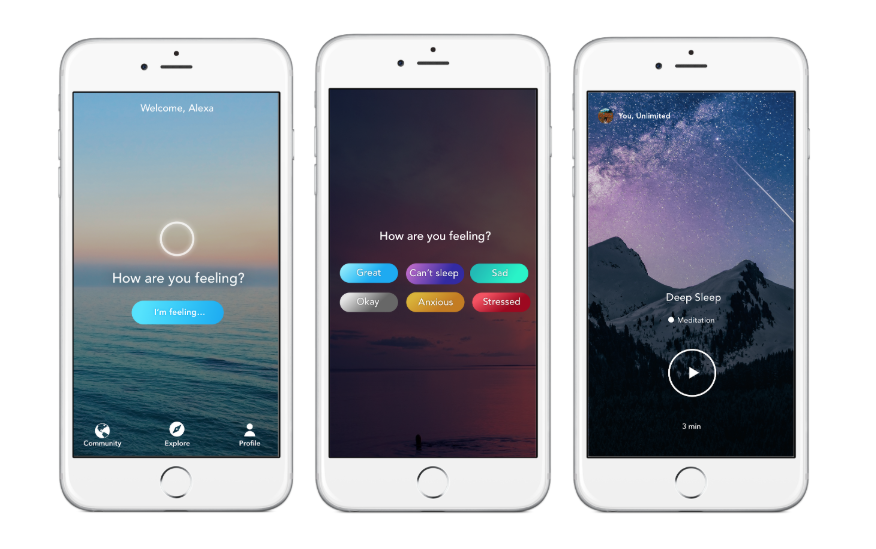
&At Reach, we often ask how we can empower people to achieve at their fullest potential,& Reach Capital PartnerWayee Chu said in a statement. &We are thrilled to be supporting two founders who are not only deeply driven by their own personal narrative in living with a family member with a mental illness, but who have committed themselves in building a world-class technology and tool to empower others in building a regular mental health and wellness practice.&
With the funding in tow, Aura has plans to expand its base of content creators and grow its team — which currently consists just of the Lee brothers. Down the road, Aura envisions integrating the app with wearable devices and their respective sensors to detect mood automatically. That way, Aura would be able to serve upwhat you need before you know you need it. The company also plans to become more than just a content platform by building additional tools on top of the core service.
- Details
- Category: Technology
The new Pro marks what is arguably the single largest design change to the iPad line in its eight-and-a-half-year existence. In fact, the new slate is almost unrecognizable as an iPad from the front on.
Thatprobably a good thing, of course. The tablet-defining line was long overdue for a rethink. After nearly a decade in existence, ittime to shake off the cobwebs. And naturally, most of the design upgrades on the new product will ultimately filter down to the rest of the line.
As a starting point, however, Apple took a good, long look at the iPhone for a few insights into how to remove some of that unsightly bezel. Not altogether, of course — after all, the user needs somewhere to put their hands.
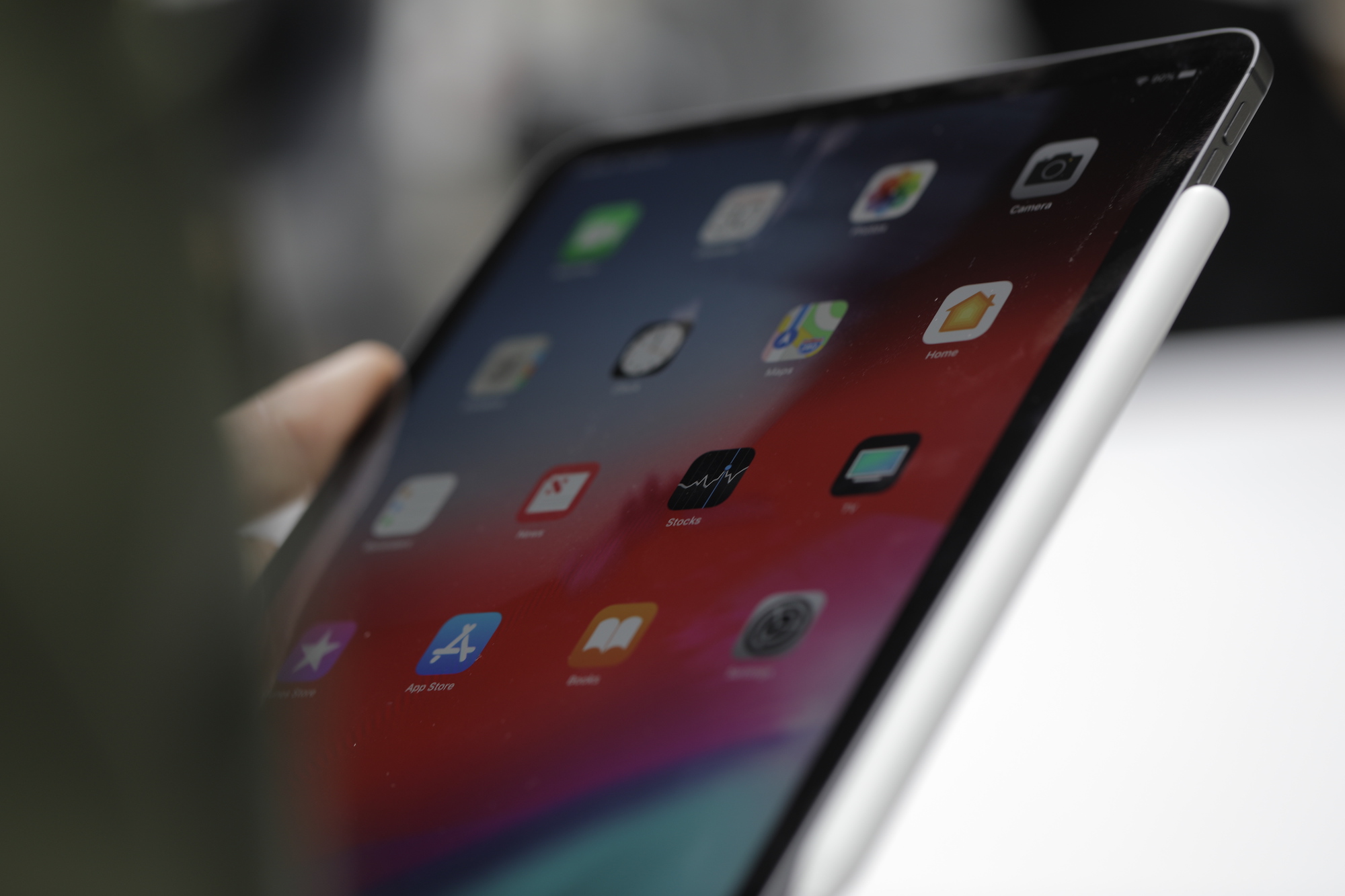
Anyone whoever held the iPhone X in their hands can tell you that your fingers and the edges of your hands still have the tendency to accidentally come into contact with the screen, which is a perfectly fine way to mess yourself up, mid-game. As such, therestill the remnants of a black bezel around the edges here.
The loss of the home button feels like a big deal, from a legacy standpoint, at least. The iPad marks the last stand for the familiar design flourish. As someone whobeen carrying around an iPhone XS for some weeks, however, I can attest to the fact that you won&t ultimately miss it.
The key is getting used to the new interactions in iOS, swiping down from the bottom to close an app, for example. The iPad, however, marks the intersection between the iPhone and Mac experience, so there are a lot more options here for interaction, including, notably, the menu bar borrowed from MacOS. The much larger screen real estate, meanwhile (11 and 12.9 inches), means gestures don&t have to do nearly as much heavy lifting as with the iPhone.
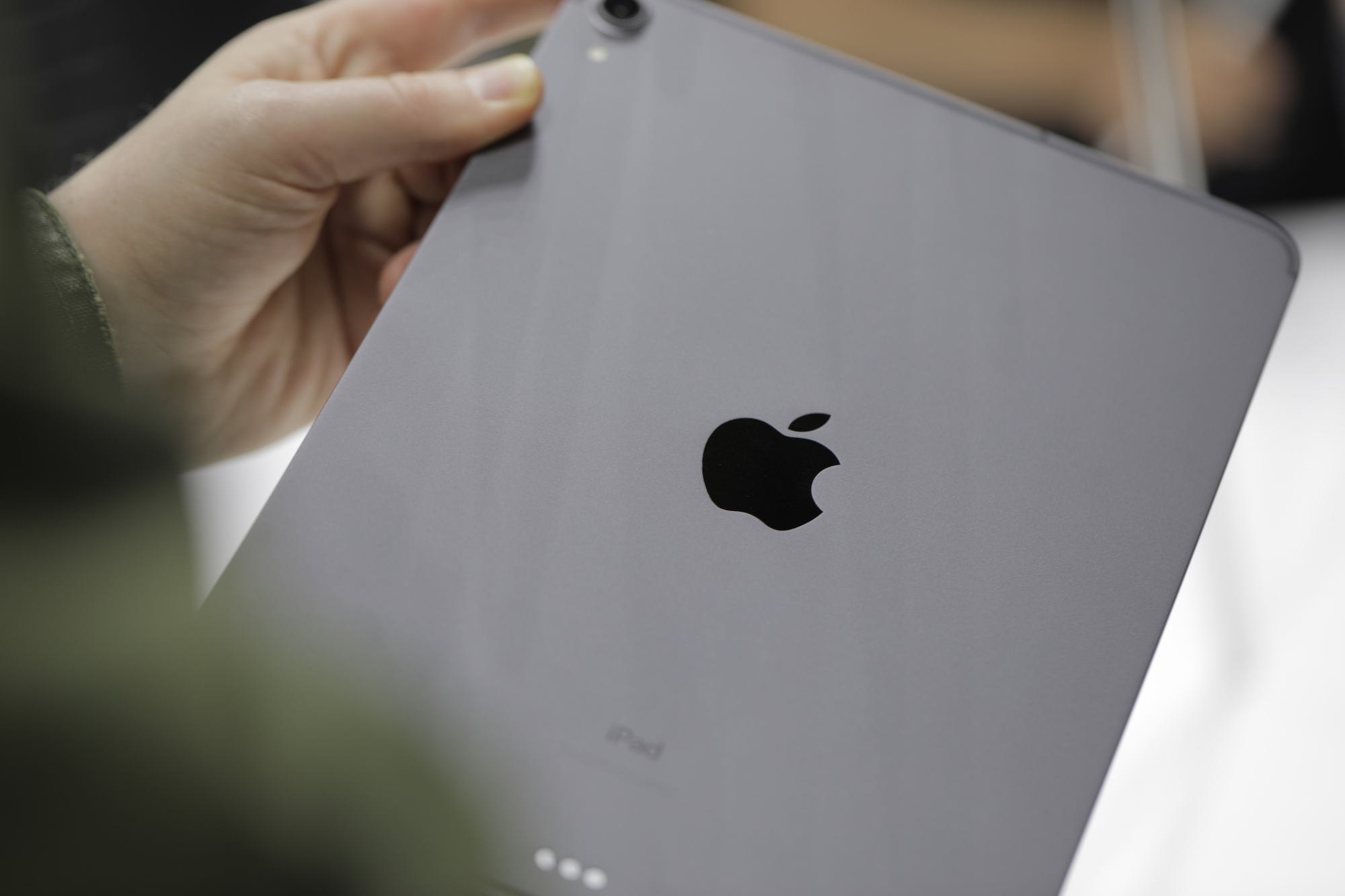
The device is certainly thin, as advertised, leaving the edges — while rounded — feeling a bit sharper than on their predecessor. The rear of the device, with its brushed, space-gray aluminum, meanwhile, brings nothing to mind more than the latest MacBooks, marking an interesting sort of aesthetic consistency that we really haven&t seen at this level between iOS and MacOS devices.
You&ll find the camera at the top of the device — the thinner design does mean it juts out a bit here, so as ever, you&ll probably want to nab a case to keep that bit safe. Along the bottom are a trio of magnetic connectors for the optional keyboard case, which will also help orient the device when ittime to put it back.
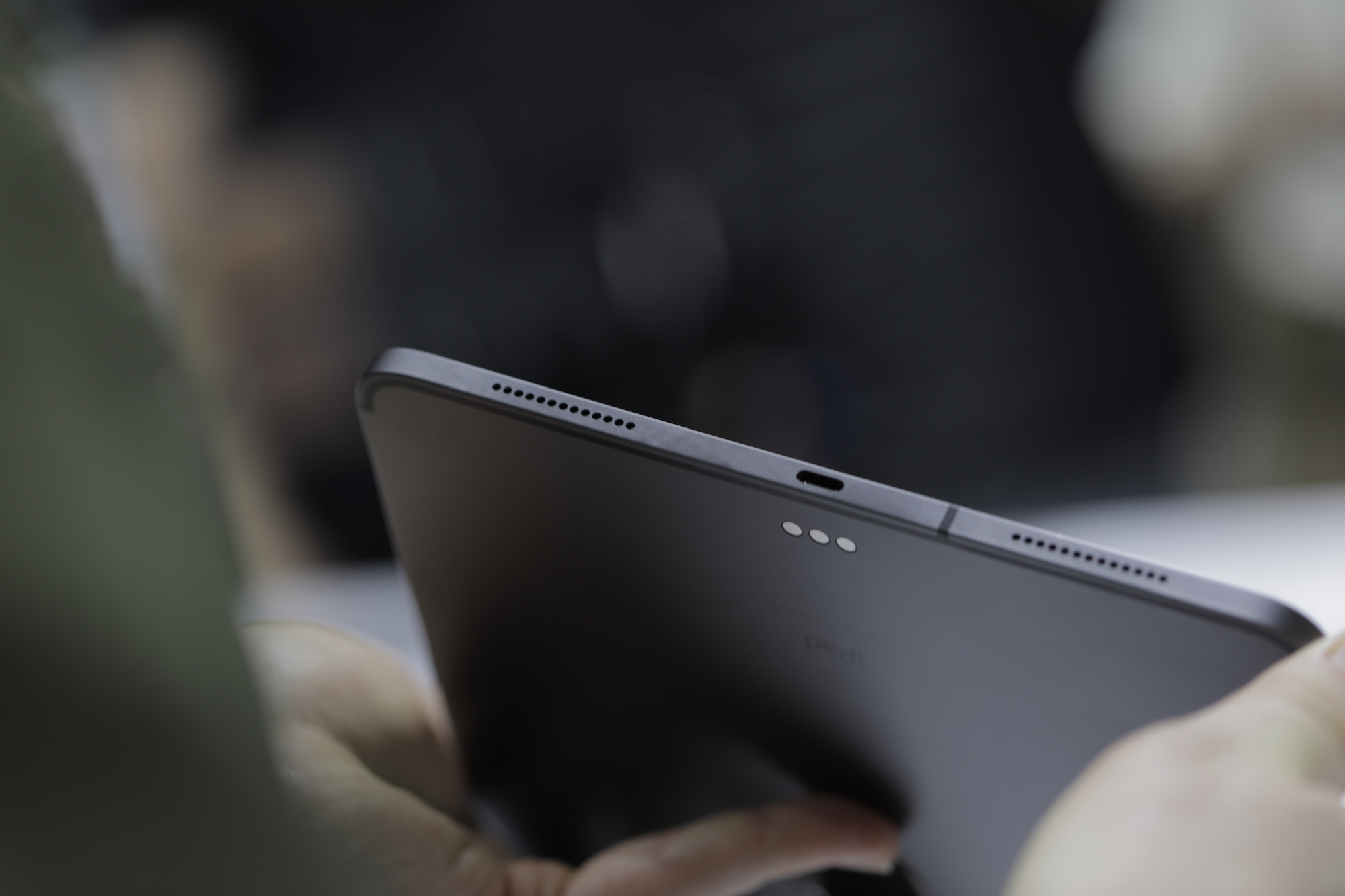
Along the bottom edge, you&ll find the USB-C port. Far and away the most surprising change here, as Apple abandons its longstanding proprietary connector in favor of something far more universal — and, as it happens, something that sends power both ways, making it possible to charge your phone and smaller devices with the iPad itself.
Something Apple didn&t mention during its keynote, however, is the sad, inevitable end of the headphone jack. RIP, little buddy.
On the top edge is a small gray patch. Thatwhere the new Apple Pencil connects magnetically on its single flat edge (which has the added bonus of making sure it doesn&t roll away when iton a table). Appleadded a nice touch to iOS here, which pops up a charging status for the pencil when itconnected to the top of the device.

- Details
- Category: Technology
Read more: Up close and hands-on with the new iPad Pro
Write comment (91 Comments)This is a public service announcement. The latest and greatest iPad, namely the 12.9-inch iPad Pro, will cost you $2,227 to buy in its best configuration and with the basic accessories that make it worth having in the first place. Plus tax, of course. I&m not making a value judgment here, just stating the facts. Tablets are getting pretty damn expensive.
To be clear, herewhat you&d be getting for that price.
- iPad Pro base cost $999
- Upgrade from 64GB to 1TB storage: $750 (!)
- Cellular chip: $150
- New Apple Pencil: $129
- Smart Keyboard Folio: $199
Tax varies. Shippingfree, at least.
To me the cost of the base device is actually not bad, though I wouldn&t buy it. It really does look like a fine device, if you can get over the curved screen edges and minuscule bezels that will probably make you drop it. I can really see how the 12.9-inch iPad Pro could be a great tool for some artists, assuming they&re already successful enough to afford it. Good stylus surfaces are expensive and the iPad has proven itself to be at the very least competitive.

The storage is, as always, the eye-wateringly expensive upgrade that doesn&t really jibe with the cost of the actual components. Good flash storage isn&t super cheap, but it isn&t $750 a terabyte. A good M.2 drive of that capacity and speed is perhaps $150, and thatincluding the interface and so on. Apple charging an arm and a leg for upgraded storage is nothing new, but they somehow manage to make it just as shocking every time.
The cellular is another upsell that probably isn&t worth it, considering it also incurs a monthly cost. If it was a low-speed Amazon-style free service, I&d do it in a heartbeat to keep my notes and saved articles up to date. But itgoing to run you $150 upfront and probably almost that every year as an added device to your plan. (Could be a nice option to have if you travel a lot, though.)
The accessories are expensive, but that new stylus and its snap-on charging (hardly an Apple innovation but nice to have) sure do look nice. You&ll need a keyboard if you&re going to do anything but sketch and read comics on this thing.
Tablet computer or computer tablet
And adding the keyboard is really where you start to blur the line between tablet and &real& computer. Of course, the Microsoft Surface, bless its heart and its tiny sales numbers (unflatteringly called out by Apple on stage), is the one that has made strides here over the last few years and Apple is merely drafting it. Thatfine — itbeen the other way around plenty of times.
But the difference when you start looking at the apps and features is pretty serious. The iPad Pro is certainly the most productive and professional tablet out there, but as soon as you add a keyboard and set it down on your lap, it starts competing with laptops. And the Surface lineup, while it may lack some of the polish of the iPad, is arguably more powerful both in specs (hard to compare Intelchips to Appledirectly in this case) and certainly in software capability.
I suppose that last point is arguable, as well, but lettry to be honest with ourselves. A Windows computer can do more than an iPad.
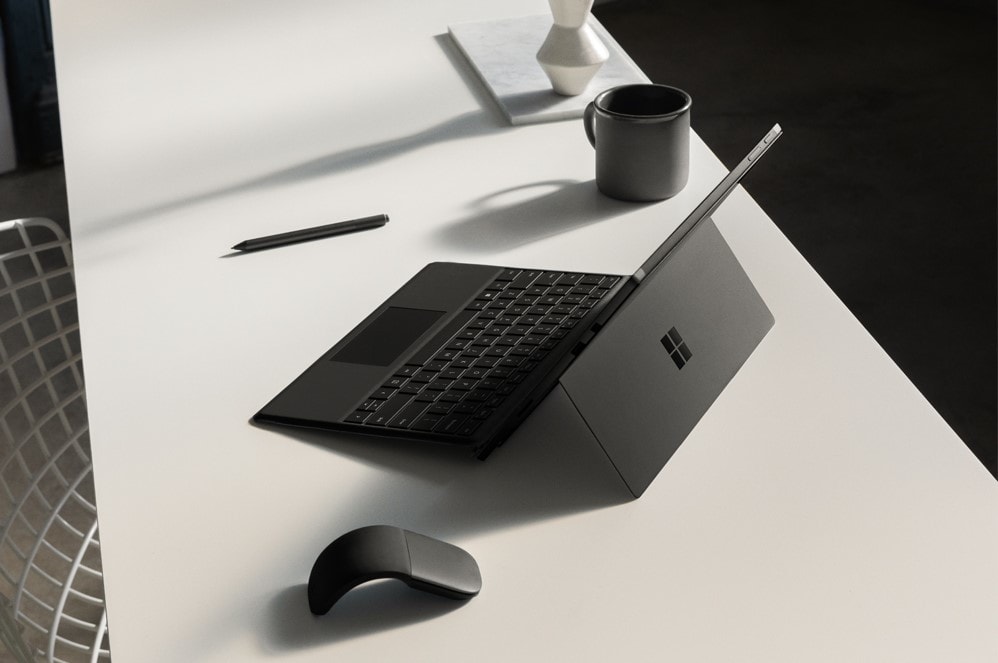
Microsoftdevice, after all, is a full-blown computer that acts like a tablet when you want it to, not vice versa. Thatimportant. If I was going to spend $2,000 on a daily driver (though honestly, thereno need to), I sure as hell wouldn&t pick the one with all kinds of weird, half-formed multitasking gestures, semi-functional cross-app compatibility and app features and selection highly curated and restricted by the people who own the store. And this is coming from someone who likes Macs and iPads!
For the same price as the iPad Pro discussed above, you could get a Surface Pro 6 with 16 gigs of RAM (Apple doesn&t specify how much the iPad Pro has, and if it doesn&t crow about it, that usually means itnothing to crow about), a better processor (Intel Core i7, same generation) and… well, if you want that terabyte of storage you&re still going to pay through the nose. Maxing it out (including accessories) costs you a couple hundred more than the best iPad you can get, but I think you&d be getting much more value for your dollar.
Plus the Surface has a headphone jack.
That said, thereno reason to go all-out on either of these things. Thatthe real trap that both companies want you to fall into. Save money and buy last yearmodel or the year before, save yourself a thousand bucks and take a vacation instead. You deserve it.

- Details
- Category: Technology
Read more: A fully loaded iPad Pro will cost you $2,227
Write comment (95 Comments)Cockroach Labopen source SQL database, CockroachDB, has been making inroads since it launched last year, but as any open source technology matures, in order to move deeper into markets it has to move beyond technical early adopters to a more generalized audience. To help achieve that, the company announced a new CockroachDB managed service today.
The service has been designed to be cloud-agnostic, and for starters itgoing to be available on Amazon Web Services and Google Cloud Platform. Cockroach, which launched in 2015, has always positioned itself as modern cloud alternative to the likes of Oracle or even AmazonAurora database.
As company co-founder and CEO Spencer Kimball told me in an interview in May, those companies involve too much vendor lock-in for his taste. His company launched as open alternative to all of that. &You can migrate a Cockroach cluster from one cloud to another with no down time,& Kimball told TechCrunch in May.
He believes having that kind of flexibility is a huge advantage over what other vendors are offering, and todayannouncement carries that a step further. Instead of doing all the heavy lifting of setting up and managing a database and the related infrastructure, Cockroach is now offering CockroachDB as a service to handle all of that for you.
Kimball certainly recognizes that by offering his companyproduct in this format, it will help grow his market. &We&ve been seeing significant migration activity away from Oracle, AWS Aurora, and Cassandra, and we&re now able to get our customers to market faster with Managed CockroachDB,& Kimball said in a statement.
The database itself offers the advantage of being ultra-resilient, meaning it stays up and running under most circumstances and thata huge value proposition for any database product. It achieves up time through replication, so if one version of itself goes down, the next can take over.
As an open source tool, it has been making money up until now by offering an enterprise version, which includes backup, support and other premium pieces. With todayannouncement, the company can get a more direct revenue stream from customers subscribing to the database service.
A year ago, the company announced version 1.0 of CockroachDB and $27 million in Series B financing, which was led by Redpoint with participation from Benchmark, GV, Index Ventures and FirstMark. They&ve obviously been putting that money to good use developing this new managed service.
- Details
- Category: Technology
Read more: Cockroach Labs launches CockroachDB as managed service
Write comment (97 Comments)Apple drove the final nails in the home buttoncoffin on Tuesday, removing the once ubiquitous feature from its new line of iPad devices.
The new iPad Pro devices, revealed at TuesdayApple event in New York,no longer have a home button. The design move, which is meant to make room for a bigger, more compelling display, follows the home buttonremoval on the iPhone. Apple alsodropped the Lightning port withthe new iPad Pro and moved to the USB-C.
The new iPad Pro, which comes in two sizes, is now unlocked with Face ID. Itbeen redesigned to work in any direction too, so thereno &wrong way& to unlock it.
Once the device is unlocked, userswill be able to perform actions using on-screen gesture controls to access the feature they need. For instance, users can swipedown from the upper-right corner to get to the control center, or swipe up from the bottom toaccess the dock. In short, itgoing to be the same kind of gesturesused for the newiPhone 10.
Apple started phasing out the home button in 2017, beginning with itspremiumiPhone X handset. It kept the physical home buttons on cheaper iPhones. But we all knew their time would come.
That hammer dropped in 2018 and Apple cleared the home button from its newiPhone XS, iPhone XS MaxoriPhone XR.

- Details
- Category: Technology
Read more: Apple’s new iPads delete the home button for good
Write comment (91 Comments)Page 3794 of 5614

 8
8





